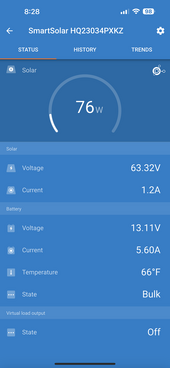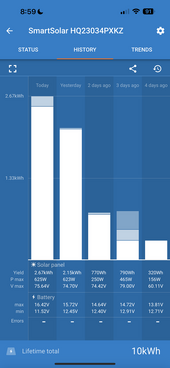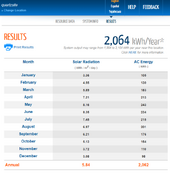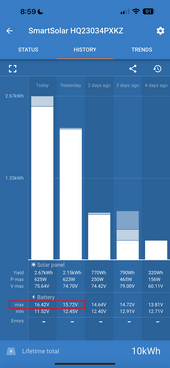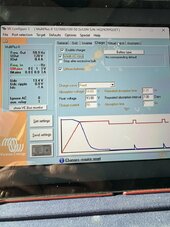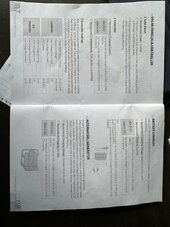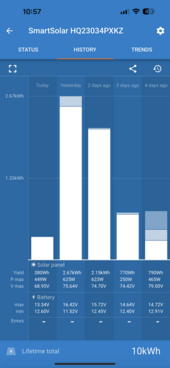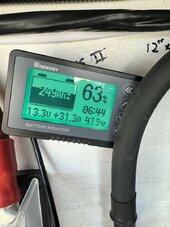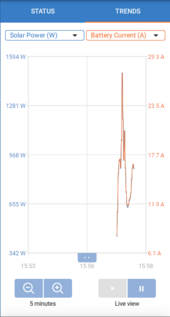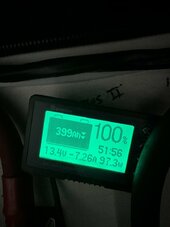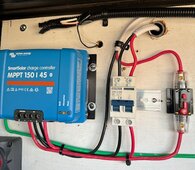Sportzfann
New Member
- Joined
- May 17, 2020
- Messages
- 93
I have some questions about reading the data from my smart solar device, 150/45 maybe someone can chime in.
the watts produced I understand (76 ) from array.
the current shown is 1.2 A @63 V from solar panels. (Slightly cloudy day. 4-325w on roof 12V system 400ah Li time bank.)
battery section 13.11V. 5.6A batt temp 66deg. Bulk charge mode.
is the batt volts 13.11 the voltage applied from solar or the actual battery volts ?
same for the current is the 5.6A the amount being used or charging amount from solar?
Thanks for the help just trying to understand correctly ?. Thanks Sportz
the watts produced I understand (76 ) from array.
the current shown is 1.2 A @63 V from solar panels. (Slightly cloudy day. 4-325w on roof 12V system 400ah Li time bank.)
battery section 13.11V. 5.6A batt temp 66deg. Bulk charge mode.
is the batt volts 13.11 the voltage applied from solar or the actual battery volts ?
same for the current is the 5.6A the amount being used or charging amount from solar?
Thanks for the help just trying to understand correctly ?. Thanks Sportz



